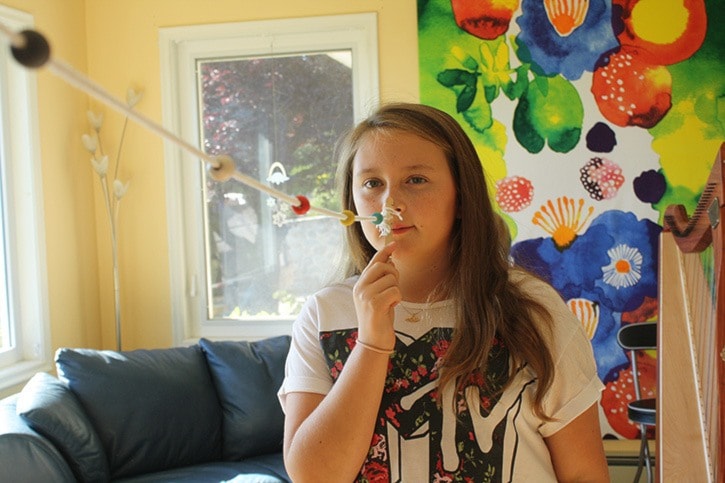Helena Murray-Hill didn’t know why she was beginning to bump into walls.
Her anxiety was also on the rise – she recalls having to escape a crowded room – but it wasn’t until Helena happened upon an attentive optometrist that she discovered her problem had a relatively straightforward solution. The optometrist began by asking Helena how she reads.
“I close one eye,” she responded.
Since that fateful day a year and a half ago, Helena, 13, has been working with Cameron McCrodan, a Saanich optometrist with a primary focus on behavioural optometry. McCrodan uses a method called visual therapy to treat vision inefficiencies.
“Standard eye exams do not test someone’s tracking efficiency and accuracy,” McCrodan said. “Headaches, crowd anxiety (can be) related to the inability to focus.”
Helena was an A student in Grades 4 and 5 at Arbutus Global middle school, so her behavioural shift seemed odd to mother Anita Murray-Hill.
Helena wouldn’t touch a book outside of school, and as other issues arose, Anita saw enough of a pattern that she and Helena spent the better part of two years trying to figure out what was wrong.
Medical doctors, a counsellor, an occupational therapist and other experts all had their say, but none could get to the root of the problem. At one point, Helena was falsely diagnosed with dysgraphia, a form of writing deficiency.
McCroden is now assisting a new non-profit society, The Visual Process, created by Anita and Sooke teacher Jenn Gibson, which educates parents and teachers about learning and behaviour-related vision problems and the subsequent quality of life impact on children.
“I was once working with a 50-year-old man,” McCrodan said. “Once diagnosed, he said, ‘I always thought I didn’t like to read because I was stupid.’ People also assume these are personality faults. I’ve seen a few dads break down in tears because they’d called their kid lazy.”
Tracking assumes the eyes move together, but it’s estimated that as many as one in four people unknowingly struggle with the problem. In kids with learning disabilities, poor tracking can be seen in 80 per cent of cases, McCroden says.
Gibson, who lives in Colwood, said her 10-year-old daughter was in a similar situation.
After Julia took the College of Optometrists in Vision Development Quality of Life Checklist, Jenn said she recognized some of the symptoms in her students as well.
“Kids scrunching their faces, laying on the desk and peeking out with one eye, acting out,” Gibson said. “We want The Visual Process to teach educators and parents to recognize these issues early, but it’s also for people of all ages. There is a 91 year old in therapy. It can always be treated.”
To find out more, visit thevisualprocess.com.
reporter@saanichnews.com
